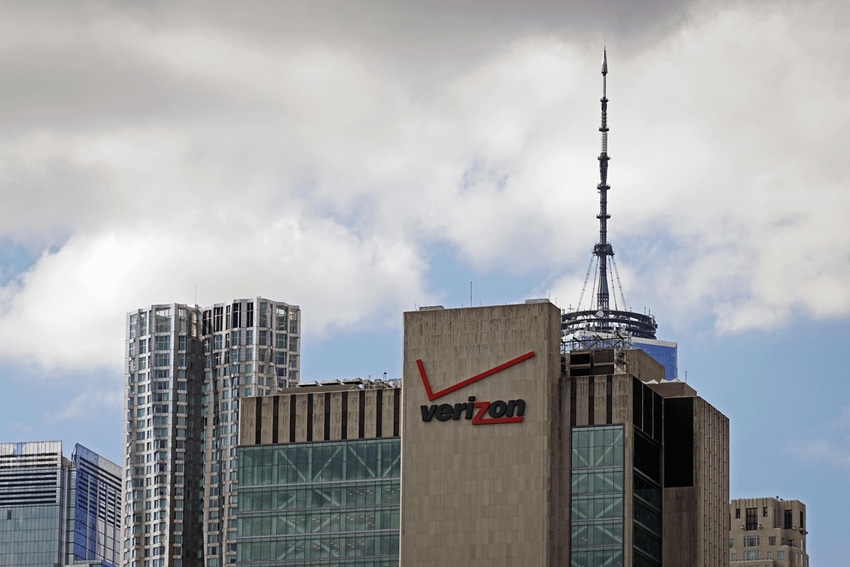Verizon's mobility biz advances, but lead worries remain
'The actions we are taking ... are working,' said Verizon CEO Hans Vestberg. But Verizon lost around 136,000 customers in its consumer-focused smartphone business.

Verizon reported slightly better-than-expected results in its mobility business for the second quarter of 2023, although the company continues to lose share in the consumer side of the market. Company officials also reiterated Verizon's financial guidance for the rest of the year.
Partly as a result, Verizon's stock continued to show signs of improvement Tuesday after several weeks of declines.
Meanwhile, Verizon said it continues to investigate the presence of lead within its aging copper network. But company officials declined to offer any clear guidance on how the situation might ultimately be resolved.
Broadly, though, Verizon officials sought to paint a positive picture of the company's overall prospects. They argued that Verizon's mobility business ought to continue its upward trajectory as it adds more midband C-band spectrum into its network later this year, buoyed by the company's new pricing plans and leadership structure.
"The actions we are taking...are working," CEO Hans Vestberg said during the operator's quarterly conference call Tuesday morning.
The mobility business
Verizon reported total postpaid phone net customer additions of roughly 8,000 during the second quarter. That figure comprises around 136,000 net customer losses in Verizon's consumer-focused business, offset by 144,000 net customer additions in Verizon's business-focused division. According to the financial analysts at Evercore, both figures were slightly better than expected.
Importantly, Vestberg said that around 70% of Verizon's new postpaid customers are selecting its most expensive – and most profitable – unlimited plans. He added that Verizon gained more customers in markets where Verizon offers speedy midband 5G services – the carrier is scheduled to increase the scope of its midband network later this year as it gains access to more C-band spectrum.
Verizon continues to lose prepaid customers, dropping 304,000 such customers during the second quarter (an increase over the 229,000 prepaid customers it lost in the same quarter a year ago). But company officials said they expect that situation to improve as the company puts more emphasis on prepaid brands including Visible and Total by Verizon.
Broadly, the figures indicate that Verizon continues to bleed customers in a trend that started last year. Verizon officials have sought to stanch that bleeding with new pricing plans and new leadership.
But Verizon officials stopped short of promising that they had fixed the problem. "We're going to be very disciplined on how we approach the market," said Tony Skiadas, Verizon's new CFO – but he did not say whether Verizon would reverse its consumer losses in the third quarter.
In terms of financials, Verizon's total wireless service revenues reached $19.1 billion in the quarter, a 3.8% increase year-over-year. Company officials attributed the rise to moves including price increases and changes to Verizon's handset insurance program. Verizon continues to expect to report total wireless service revenue growth of 2.5% to 4.5% during 2023.
The lead situation
Verizon executives spoke for the first time publicly about the lead that may remain in the operator's aging copper network.
"We take this matter seriously," Vestberg said, explaining that the operator is conducting a lengthy review of the situation and would release its findings at some later date. "We're using a fact- and science-based approach in our assessments."
Verizon's Skiadas added that "records are incomplete" regarding the scope of lead in Verizon's network, considering the company stopped covering its telecom cables with lead in the 1950s. However, Skiadas said that Verizon's total copper network covers around 540,000 miles, and that half of those wires are above the ground. He suggested a "small percentage" of that cabling might contain lead. But he added that those figures do not include the networks that stem from Verizon's acquisitions of MCI and XO Communications.
Skiadas suggested that most of Verizon's lead-covered cables would be "in locations that minimizes the chance for public contact." But he said it is "far too soon" for the company to estimate the financial impact the situation might have.
Verizon officials also did not address questions about Verizon employees who might have worked with lead cabling, and how the company might handle potential illnesses as a result.
The lead legacy situation stems from a series of detailed, lengthy articles by The Wall Street Journal on aging telecommunications cables that may contain hazardous amounts of lead. The publication's exposé acted like a sledgehammer on shares of AT&T, Verizon and other telcos amid reports of cleanup costs totaling up to $60 billion.
AT&T is widely believed to be the company affected the most by the situation. AT&T reports Q2 earnings Wednesday, and company officials will likely address the issue then.
However, last week, AT&T said that lead-covered cables represent less than 10% of its total copper network footprint, which spans around 2 million miles of cable. And according to a financial analyst firm covering the company, AT&T might ultimately spend just $84 million per year cleaning up those potentially hazardous cables.
Related posts:
— Mike Dano, Editorial Director, 5G & Mobile Strategies, Light Reading | @mikeddano
About the Author(s)
You May Also Like












